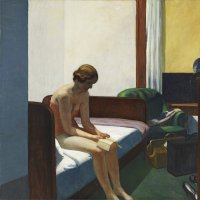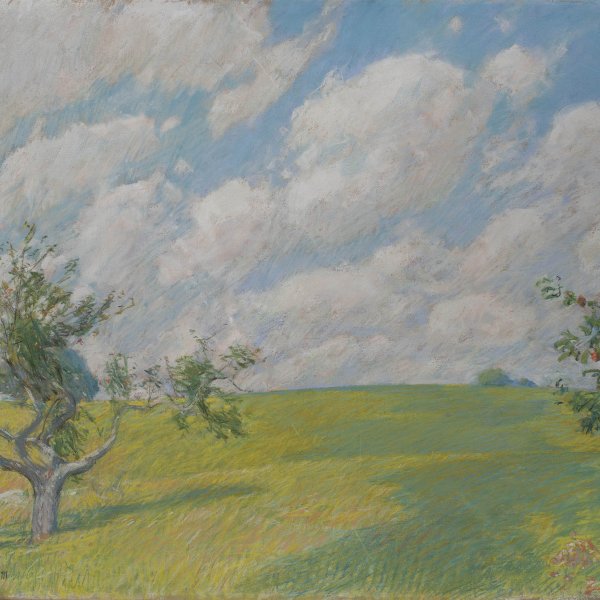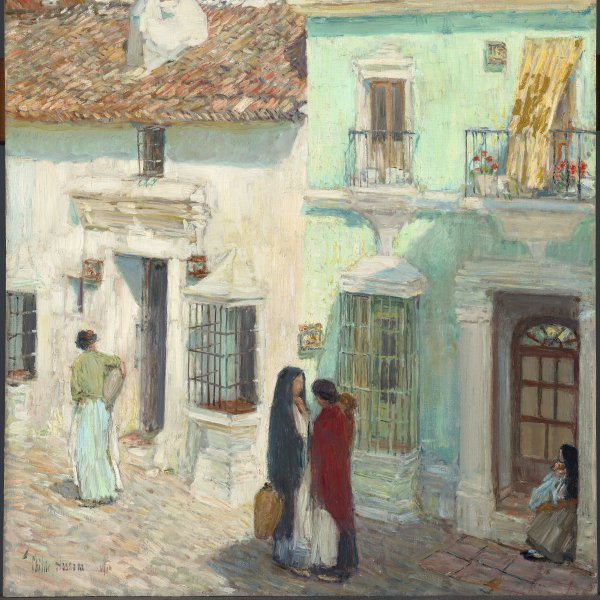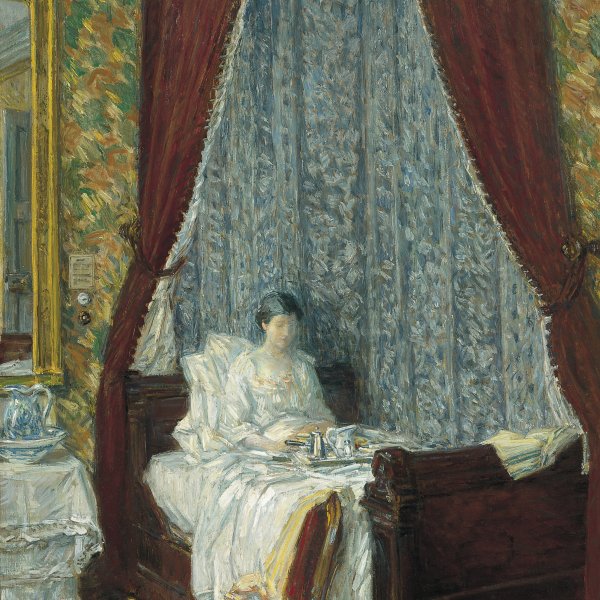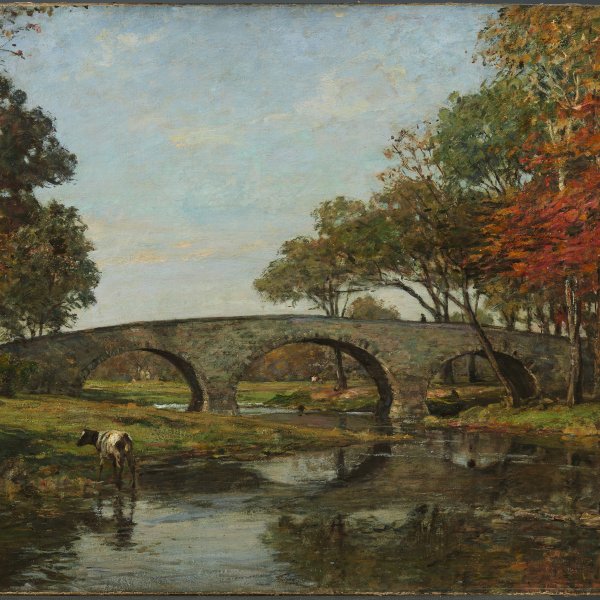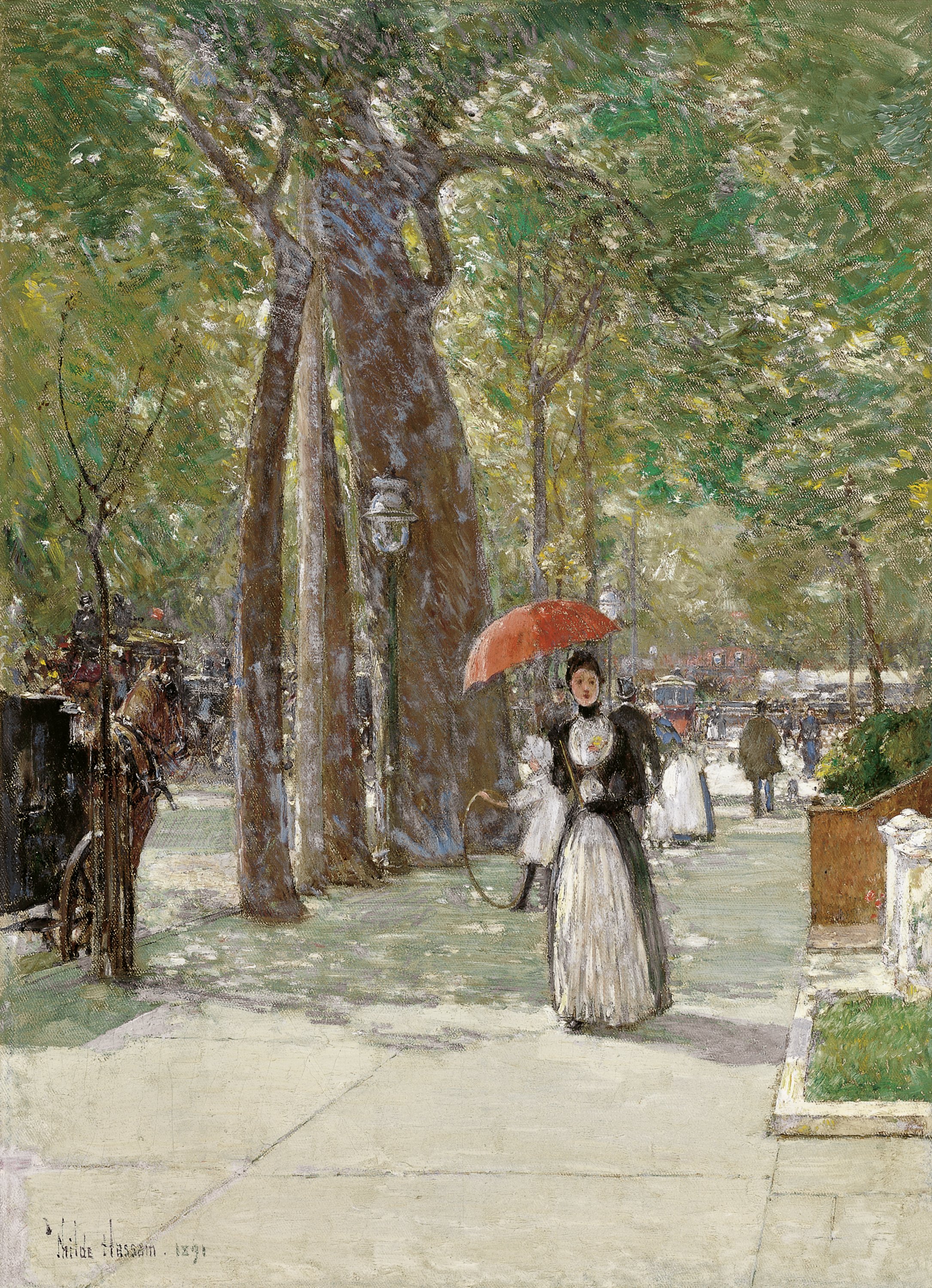Fifth Avenue at Washington Square, New York
1891
Oil on canvas.
56 x 40.6 cm
Carmen Thyssen Collection
Inv. no. (
CTB.1979.19
)
Room E
Level 0
Carmen Thyssen Collection and Temporary exhibition rooms
Following his return from Paris in 1889, Hassam lived at 95 Fifth Avenue, a few steps from Washington Square, one of the oldest genteel enclaves in the city. This painting probably depicts that block of brownstones and perhaps the sidewalk in front of Hassam's studio apartment. He chose to live on a part of Fifth Avenue that resembled the tree-lined boulevards of Paris. Nearby, the soon to be completed Washington Arch, designed by Stanford White, suggested the Arc de Triomphe on the Champs-Elysées. During the early 1890s Hassam painted a number of views of the Avenue in all kinds of weather and became well known for them. He also illustrated an article on the subject by Marianna G. Van Rensselaer for The Century Magazine in 1893.
During his two sojourns in France during the 1880s Hassam absorbed the painterly technique and abrupt compositional format suggestive of the tempo of modern urban life from the French Impressionists and naturalists who were his neighbours in Montmartre. In the spirit of the French painters, Hassam said that his primary interest in such scenes was to capture "humanity in motion". In Fifth Avenue at Washington Square the small blurred figures and cabs passing in the street are seen from slightly above eye level, which may reflect the artist's practice at the time of painting from cab windows. The view from a cab would have aided in framing the composition, which is marked by its clear geometries and carefully balanced internal order; the intersecting diagonal lines in the street, sidewalk and towering trees frame the figures and, by contrast, enhance their miniature scale and movement. The vertical orientation of the canvas stresses the arching canopy of trees above which give the fashionable strollers below a sense of protection. The spaciousness in the lateral spread of the avenue and walk also recalls the boulevards of Paris. Hassam enveloped the scene with a gentle, flickering golden light which is complemented by cool greens and blues in the shadows. Much of the picture's delicacy and charm is staked on the small feathery brushstrokes which reflect his work in pastel.
Although Hassam assimilated the compositions and light of Monet's Impressionism, his colour harmonies and delight in "beauty for its own sake" followed Whistler's Aestheticism. Recognised as a synthesis of these two strains by critics in his own time, Hassam's animated, celebratory paintings manifest a highly aestheticised, hybrid form of Impressionism which Americans supported enthusiastically in the 1890s and the first decades of the 20th century.
Kathleen Pyne
During his two sojourns in France during the 1880s Hassam absorbed the painterly technique and abrupt compositional format suggestive of the tempo of modern urban life from the French Impressionists and naturalists who were his neighbours in Montmartre. In the spirit of the French painters, Hassam said that his primary interest in such scenes was to capture "humanity in motion". In Fifth Avenue at Washington Square the small blurred figures and cabs passing in the street are seen from slightly above eye level, which may reflect the artist's practice at the time of painting from cab windows. The view from a cab would have aided in framing the composition, which is marked by its clear geometries and carefully balanced internal order; the intersecting diagonal lines in the street, sidewalk and towering trees frame the figures and, by contrast, enhance their miniature scale and movement. The vertical orientation of the canvas stresses the arching canopy of trees above which give the fashionable strollers below a sense of protection. The spaciousness in the lateral spread of the avenue and walk also recalls the boulevards of Paris. Hassam enveloped the scene with a gentle, flickering golden light which is complemented by cool greens and blues in the shadows. Much of the picture's delicacy and charm is staked on the small feathery brushstrokes which reflect his work in pastel.
Although Hassam assimilated the compositions and light of Monet's Impressionism, his colour harmonies and delight in "beauty for its own sake" followed Whistler's Aestheticism. Recognised as a synthesis of these two strains by critics in his own time, Hassam's animated, celebratory paintings manifest a highly aestheticised, hybrid form of Impressionism which Americans supported enthusiastically in the 1890s and the first decades of the 20th century.
Kathleen Pyne

